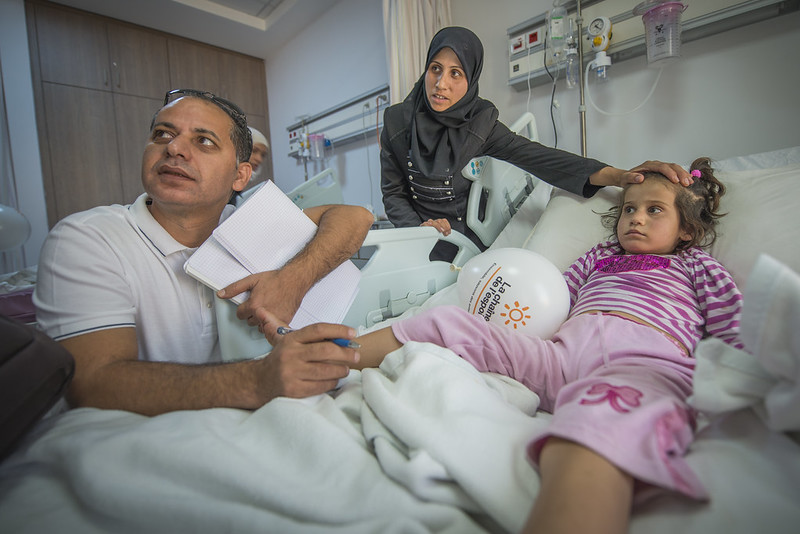Jordan’s Universal Health Care Service: Expanding and Improving
 Poor health is one of the leading causes of poverty and one of the main barriers to escaping poverty. Poverty can also cause or increase the likelihood of an individual having poor health. Given this symbiotic relationship between poverty and health one of the most effective things a government can do to attempt to reduce it is to provide effective universal public health care.
Poor health is one of the leading causes of poverty and one of the main barriers to escaping poverty. Poverty can also cause or increase the likelihood of an individual having poor health. Given this symbiotic relationship between poverty and health one of the most effective things a government can do to attempt to reduce it is to provide effective universal public health care.
Jordan is an upper-middle-income country with a population of around 11.3 million people. As of 2023, around 35% of Jordan’s total population, around 3.98 million people were classified as poor, living below $7.9 a day. This is nearly a 20% increase from 2018 when 15.7% of people were estimated to be poor. Around only 60% of Jordanians get health services from the government according to a 2023 study, a number that is quite low for a country aiming to achieve full universal health care coverage by 2030.
Jordan’s Universal Health Care and Hakeem
Although Jordan has not yet achieved full universal health care coverage it has made it one of its key priorities to achieve this by 2030, in line with the U.N.’s sustainable development goals (SDGs). With this aim in mind, Electronic Health Solutions (EHS), a Jordanian health company that focuses on providing improved health care technology launched its flagship program “Hakeem” in 2009.
This program provides access to electronic health records, linked to a central system, allowing health professionals access to patient’s medical records from any facility covered by ‘Hakeem’. As of June 2024, EHS has partnered with the U.S. Trade and Development Agency (USTDA), signing a grant agreement to provide technical assistance to expand Hakeem, increasing the number of health care facilities it covers. The grant will also “improve patient access, facilitate processing of patient data management records” and provide new services to increase the efficiency of care, according to USTDA. This recent partnership is a continuation of an original partnership between EHS and USTDA started in 2013.
Medical Record Access
Hakeem provides quick and easy access to patient medical records, allowing for continuity of care between hospitals and health care professionals for patients.
Ease of access to a patient’s health care records may seem like a trivial thing but its importance should not be understated. This is because it can drastically decrease the time it takes to diagnose a patient and provide them with the correct health care by aligning treatment with any potential underlying health condition or unique health care need of a patient. It also allows for disclosure of previously received treatment, potentially for the same health condition which will only help to speed up the health care process and reduce the time they are in hospital and the time they may take to recover.
A study from Erasmus University in Rotterdam noted that “[r]esponsive primary care and prompt referral for effective hospital treatment quicken recovery from illness and minimize disruption on earnings.”
Cost of Health Care
Given the main ways in which ill health can cause someone to enter poverty is via out-of-pocket spending on health care and loss of earnings due to not being able to work – the World Health Organisation (WHO) noted that “in 2019, out-of-pocket health spending dragged 344 million people further into extreme poverty and 1.3 billion into relative poverty.” Hakeem helps in reducing the time to receive treatment and recover, decreasing the likelihood that a patient’s ill health will cause them to enter into or worsen their condition of poverty.
The positive impact of ‘Hakeem’ has also already been demonstrated through its use during the COVID-19 pandemic where health care professionals in Jordan utilized it “to provide continuity of care for patients with conditions including diabetes, oncology, and renal systems” when the pandemic restricted movement, according to USTDA. This shows how it allows patients to still receive health care even in extraneous circumstances, reducing out-of-pocket spending and risk to patients.
Poverty Reduction
Universal health care, its maintenance and improvement, is a key and extremely impactful step a government can take to reduce poverty rates within a country. The study from Erasmus University also notes that due to the ability of ill-health to cause poverty, “[p]overty alleviation is therefore a tenable motivation for investment in health” with universal health care being a key step in this. This is because “[u]niversal health coverage […] can protect against the burden of medical expenses that may otherwise be impoverishing”. Immediate access to health care can also “ensure that patients recover quickly from illness, allowing them or their parents to return to work earlier with minimal loss of earnings.”
Improved population health, something universal health care aims to support can also reduce poverty through the economic growth generated by a healthy and therefore more productive workforce. Therefore, all this evidence points towards the importance of providing effective universal health care in attempting to reduce poverty, something Jordan is striving for.
Final Remarks
Given the risk ill health presents by potentially pushing one into poverty, the USTDA’s support of Hakeem and the continued efforts to better Jordan’s universal health care system is a key step to tackling poverty in the country. Hakeem and its continued support by both the Jordanian government and the USTDA demonstrates Jordan’s commitment to reducing poverty and providing essential services to its citizens and the global cooperation and commitment needed to effectively fight poverty as we strive for sustainable development and a better future for all.
– Archie Day
Archie is based in St Andrews, Scotland and focuses on Technology and Global Health for The Borgen Project.
Photo: Flickr
